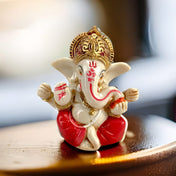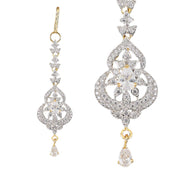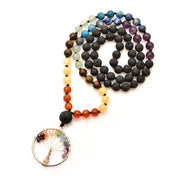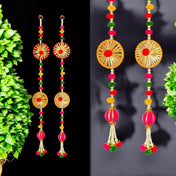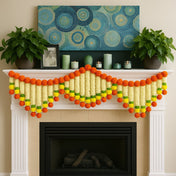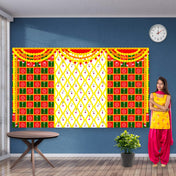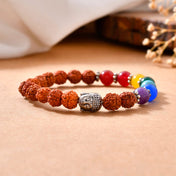Introduction
Rudraksha beads are very important in spiritual practices, especially in Hinduism and Buddhism. These sacred seeds are highly valued for their spiritual and healing qualities, representing a connection to divine energies.
In today's market, it's crucial to know the difference between real and fake Rudraksha beads for several reasons:
- Authenticity: Genuine Rudraksha beads have the pure vibrations and energies needed for spiritual practices.
- Effectiveness: Real Rudraksha beads are believed to provide genuine benefits and positive effects.
- Ethical Considerations: Supporting the craftsmanship of authentic Rudraksha beads promotes fair trade practices and respects cultural traditions.
With the rise of counterfeit Rudraksha beads being sold, it has become challenging for consumers to find genuine products. This not only affects the effectiveness of spiritual practices but also raises ethical concerns about supporting authentic artisans.
To help you navigate this issue, we will explore practical ways to tell apart real and fake Rudraksha beads. This knowledge will empower you to make informed and ethical purchasing decisions when it comes to acquiring authentic spiritual tools.
For example, if you're looking for certified products, consider buying a Rudraksha mala or a Rudraksha bracelet from trusted sources. These items not only serve as spiritual tools but also as exquisite pieces of jewelry with deep meaning. Whether it's a Rudraksha mala with a Gomukhi japa bag or a mala featuring a Narmadeshwar Shivling pendant, each piece is meticulously crafted with authenticity in mind.
Understanding the Craftsmanship Behind Authentic Rudraksha Beads
Handmade Rudraksha beads are an important part of ethnic product collections, showcasing traditional craftsmanship at its best. Skilled artisans play a crucial role in making genuine Rudraksha beads, putting in time and expertise to make sure each bead represents the rich cultural heritage tied to these sacred seeds.

The Art of Craftsmanship
Craftsmanship is more than just making something; it's about pouring love and dedication into the process. This transforms ordinary Rudraksha seeds into beautiful pieces with spiritual meaning. These artisans use techniques passed down through generations, honoring the sacredness of Rudraksha beads through their careful handiwork.
The Artisan's Touch
Using their skilled hands, artisans shape and polish each bead, revealing its unique Mukhi pattern and confirming its authenticity. The detailed process of creating Rudraksha beads not only showcases the artisan's talent but also highlights the respect they have for these spiritual objects.
A Connection to Culture
Every handmade Rudraksha bead is a sign of the artisan's skill and dedication to preserving cultural traditions. The authenticity and quality of these beads connect the past with the present, linking people to ancient practices while enriching their spiritual journey.
Timeless Treasures
In a world flooded with mass-produced copies, genuine Rudraksha beads stand out as timeless treasures made with passion and precision. The craftsmanship behind these beads not only represents cultural heritage but also embodies a sense of artistry that goes beyond generations.
For example, a certified 5 face (panchmukhi) rudraksha mala or a 5 mukhi rudraksha bracelet suitable for yoga meditation are perfect examples of such artistry. Each piece is lovingly handcrafted, ensuring both authenticity and quality.
The Science Behind Identifying Real Rudraksha Beads
The authenticity of Rudraksha beads can be determined through a scientifically advanced method known as the X-Ray Test. This method allows for an in-depth examination of the internal structure of the beads, specifically focusing on their internal seed compartments. By analyzing these compartments, we can match the findings with known Mukhis patterns, which are characteristic features of the Rudraksha beads.
For instance, a 5 Mukhi Rudraksha bracelet is suitable for yoga and meditation due to its unique properties. Each Mukhi has distinct characteristics that can be identified through this X-Ray testing method.
Moreover, these sacred beads are not just used in spiritual practices but also serve as fashionable accessories. A gold plated designer Himalayan bead Rudraksha bracelet is an excellent example of how these beads can be incorporated into stylish jewelry while still retaining their spiritual significance.
If you're interested in exploring more about these divine beads and their various uses, consider checking out Lovenspire's Rudraksha Divine Collection which includes a range of products such as Rudraksha malas and Japa malas that are handcrafted with sacred beads for spiritual adornment.

Exploring Different Methods to Verify the Authenticity of Rudraksha Beads
Authentic Rudraksha beads have specific physical characteristics that differentiate them from fake ones. One of the main signs of authenticity is density, which is crucial in confirming genuine beads. Real Rudrakshas have a unique density due to their natural formation in the seeds of the Elaeocarpus ganitrus tree.
Density Test for Rudraksha Beads
The density test involves observing how the bead behaves in water:
- Real Rudraksha: Should typically sink due to its natural weight and compact structure.
- Fake Rudraksha: Often floats or remains suspended, indicating lower density caused by artificial materials or hollow carvings.
This simple but effective test can be conducted at home, providing an initial check before deeper scrutiny.
Weight and Texture Considerations
Weight alone does not guarantee authenticity. Factors like moisture content can influence the bead’s feel and heaviness. For instance:
- Beads freshly harvested may retain moisture, making them heavier.
- Dried beads lose moisture gradually, becoming lighter but maintaining a solid texture.
- Fake beads might mimic weight through added substances but often lack the natural grainy texture of real Rudrakshas.
Touching and gently rolling the bead between fingers can reveal subtle textural differences. Authentic Rudrakshas feel rigid with evenly spaced grooves and pits, while counterfeits may appear too smooth or artificially patterned.
Additional Tips to Assess Authenticity
- Inspect for natural imperfections; genuine beads rarely have perfectly symmetrical shapes.
- Real beads display defined Mukhis (faces or lines) that correspond to specific spiritual meanings.
- Check for consistency in color without unnatural gloss or paint.
Understanding these physical attributes complements scientific methods such as the X-Ray test, enriching one’s ability to discern authenticity confidently.
These tactile and observational techniques integrate age-old wisdom with practical examination, empowering buyers seeking authentic Rudraksha beads imbued with cultural significance and spiritual power.
Microscopic Examination: Unveiling the Secrets of Genuine Rudrakshas
When it comes to verifying the authenticity of Rudraksha beads, microscopic examination unveils intricate details that differentiate genuine beads from their counterfeit counterparts. By employing advanced microscopic techniques, experts can uncover subtle distinctions that elude the naked eye, shedding light on the true nature of these sacred seeds.

How Microscopic Examination Works
Microscopic examination serves as a powerful tool in the quest for authenticity verification. Through this method, specialists can identify telltale signs that distinguish real Rudraksha beads from fake ones. These subtle differences may include:
- Detection of artificial lines or patterns that are commonly found in counterfeit beads.
- Examination of material variations and irregularities that indicate the authenticity of genuine Rudrakshas.
By scrutinizing Rudraksha beads under a microscope, one can unveil the secrets hidden within their intricate structure. This detailed analysis not only ensures the integrity of these sacred artifacts but also provides enthusiasts with a deeper understanding of the craftsmanship and artistry involved in creating authentic Rudraksha beads.
Harnessing Energy: The Vibrational Test for Authenticity Verification
The world of Rudraksha beads extends beyond physical attributes, delving into the realm of subtle energies. Among various unconventional methods to assess authenticity, the vibrational test has gained attention for its ability to distinguish genuine Rudrakshas based on their energetic properties.
Positive Vibrations from Authentic Rudrakshas
Authentic Rudraksha beads are believed to emit positive vibrations that influence the wearer’s mental and spiritual balance. These vibrations are said to resonate with natural frequencies, creating a calming and harmonizing effect. This unique energy signature is difficult to replicate in counterfeit beads made from synthetic or non-organic materials.
How the Vibrational Test Works
- Sensory Perception: Individuals with heightened sensitivity may feel a subtle warmth or tingling sensation when holding a real Rudraksha. These sensations are often absent in fake beads.
- Pendulum Method: Some practitioners suspend a pendulum over the bead. Genuine Rudrakshas purportedly cause distinctive movements due to their vibrational energy, while fakes show little to no reaction.
- Meditative Response: During meditation or prayer, wearing authentic Rudrakshas can deepen concentration and create a sense of spiritual connection, an experience not typically replicated by imitations.
This method taps into traditional beliefs about Rudraksha’s metaphysical qualities and offers a complementary approach alongside scientific tests. It emphasizes the bead's role not just as a physical object but as a conduit of spiritual energy — an aspect highly valued in Hinduism and Buddhism.
Energy sensitivity varies among individuals, making this test subjective yet meaningful for those attuned to subtle vibrations. The vibrational test encourages connecting with Rudraksha on an experiential level, complementing visual and physical authenticity checks discussed earlier.
Materials Used in Fake Rudrakshas: A Closer Look
Fake Rudrakshas are often made using a variety of materials that can be easily sourced and manipulated. Here are some common materials used to make counterfeit Rudrakshas:
- Betel Nuts: The most common material used in making fake Rudrakshas is betel nuts. These nuts are naturally round and can be easily carved or dyed to resemble genuine Rudrakshas.
- Wood: Some counterfeiters use different types of wood to create fake beads. While wood can be shaped into various forms, it lacks the unique characteristics of a real Rudraksha seed.
- Wheat Flour: Inexpensive and readily available, wheat flour is sometimes used to create imitation Rudrakshas. When mixed with water and molded, it can take on the appearance of a bead but will not possess the same energy or properties.
- Clay: Clay is another material that can be used to craft fake Rudrakshas. It can be easily molded into any shape, making it a popular choice for counterfeit production.
- Artificially Carved Stones: Some fraudsters may use stones that are artificially carved to mimic the look of a Rudraksha seed. These stones may have similar patterns but lack the authenticity and vibrational energy of a genuine bead.
By being aware of these commonly employed materials, you can better differentiate between real and fake Rudrakshas. For more tips on identifying authentic beads, check out our article on Real vs. Fake Rudraksha: Simple Ways to Tell the Difference and Buy Authentic Beads.
Buying Authentic Radakshas: Your Guide to Trusted Sources and Certifications
Finding trusted sources for buying authentic Radakshas is essential to ensure you receive genuine beads that carry the spiritual and energetic benefits traditionally associated with them. The market is flooded with counterfeit products, making it crucial to rely on sellers who have established their credibility through years of consistent delivery of authentic Rudraksha beads.
Choosing Reputable Sellers
When searching for authentic Rudraksha sellers, consider the following factors:
- Track Record: Opt for vendors known for their honesty and expertise in Indian spiritual artifacts. Established sellers often provide detailed product descriptions, customer testimonials, and transparent return policies.
- Specialization: Sellers specializing in ethnic and cultural products tend to uphold higher standards and maintain stronger connections with traditional artisans.
- Customer Support: Responsive and knowledgeable customer service can guide you through verifying bead authenticity and address any concerns promptly.
Authenticity Certifications and Lab Reports
To ensure the authenticity of Rudraksha beads, pay attention to the following documents:
- Certification Importance: Authenticity certificates from recognized gemological or spiritual institutions add a layer of trust. These documents confirm that the beads have undergone scientific evaluation.
- X-Ray or Mukhis Verification: Certificates should reflect tests like X-ray imaging or Mukhi (facial line) count verification, which are key indicators of genuine Rudraksha beads.
- Lab Report Details: Look for comprehensive lab reports that include bead origin, classification, physical characteristics, and any treatments applied or avoided.
Purchasing from certified sources aligns with supporting ethical practices and preserving the rich heritage embedded in each bead. This diligence protects buyers from counterfeit products made of inferior materials discussed earlier, ensuring your investment holds authentic cultural significance and spiritual efficacy.
Key Characteristics to Look for in Authentic Rudrakshas
When it comes to identifying genuine Rudraksha beads, there are specific physical characteristics that can help you determine their authenticity. Here are the key features to look for:
1. Clear Mukhis
Real Rudraksha beads have well-defined and distinct Mukhis or the natural segmented lines on their surface. These Mukhis are formed by the partitions inside the seed and vary in number from one face to multiple faces, such as the rare Gauri Shankar Rudraksha with two naturally joined beads.
2. Absence of Artificial Markings
Genuine Rudraksha beads do not contain any artificial carvings, lines, or modifications on their surface. Each Mukhi should appear smooth and uniform, without signs of tampering or alterations.
3. Consistent Texture
Authentic Rudraksha beads have a consistent texture throughout the seed, with no visible joints or irregularities that suggest blending of different materials.
4. Natural Shine
Real Rudraksha beads possess a natural shine or luster that comes from the oils produced by the seed itself. This sheen is distinctive and cannot be replicated in fake beads made from substitute materials.
By examining these key characteristics, buyers can make informed decisions when purchasing Rudraksha beads, ensuring they acquire authentic and spiritually potent seeds for their practices and personal well-being.
Cautionary Advice When Buying Radakshas Online or Offline
Warning Signs to Watch Out For
- Be cautious of excessively low prices, as authentic Rudraksha beads are rare and valuable.
- Avoid beads with perfect shapes and sizes, as natural variations are expected in genuine Rudrakshas.
- Beware of sellers claiming unrealistic benefits or powers associated with the beads.
Consulting Experts for Authenticity
- If uncertain about the authenticity of a Rudraksha bead, seek guidance from reputable experts in the field.
- Consider reaching out to organizations or individuals with a strong background in Vedic sciences or gemology for validation.
Remember, when purchasing Radakshas, it's crucial to prioritize quality and authenticity over attractive deals. Stay informed and trust your instincts when assessing the legitimacy of Rudraksha beads to ensure you acquire genuine and spiritually significant products for your practices.










